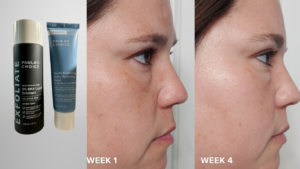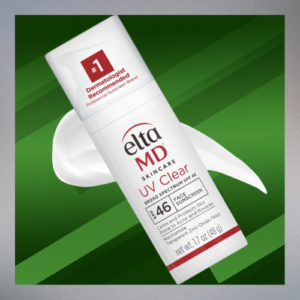This step-by-step guide offers compassionate guidance on how to effectively incorporate salicylic acid into your acne skincare routine. Understanding the challenges and emotional toll that acne can take, the guide emphasizes the importance of using salicylic acid, a powerful ingredient known for its pore-penetrating and exfoliating properties. With clear instructions, it walks you through each stage of the process, ensuring that you can confidently navigate your skincare journey towards achieving clearer and healthier skin. Remember, you’re not alone in this; many share your struggles, and with the right approach, brighter days for your skin are ahead.
The table of content
Choose the right salicylic acid product.
Select a salicylic acid product that aligns with your skin type. If you have oily or combination skin, opt for a cleanser containing 1% to 2% salicylic acid. This concentration effectively penetrates pores, helping to remove excess oil and prevent breakouts. For instance, a foaming cleanser can be a great choice, as it not only cleanses but also exfoliates the skin gently. If your skin tends to be sensitive, choose a product with a lower concentration, such as 0.5% salicylic acid, to avoid irritation while still reaping the benefits.
Consider spot treatments if you want targeted relief for specific blemishes. Look for products that contain 2% salicylic acid for maximum effectiveness. Apply these directly to the affected areas after cleansing. If you prefer a toner that incorporates salicylic acid, seek one that includes soothing ingredients like aloe or chamomile to balance the potential drying effects of the acid. Shake the toner well, apply it on a cotton pad, and swipe it over your face after cleansing. By selecting the right type of salicylic acid product, you can tailor your skincare routine to meet your individual needs while effectively managing acne.
Cleanse your face.
- Choose a gentle, non-comedogenic cleanser suitable for your skin type. Look for products that won’t clog your pores, especially if you’re prone to breakouts.
- Wet your face with lukewarm water to help open up your pores. Avoid hot water, as it can strip your skin of its natural oils and lead to dryness.
- Apply a small amount of cleanser to your fingertips or a soft washcloth. Gently massage the cleanser onto your face using circular motions for about 30 seconds. Focus on areas that tend to accumulate oil and dirt, like your forehead, nose, and chin.
- Rinse your face thoroughly with lukewarm water, ensuring all cleanser is washed away. Pat your skin dry with a clean towel, being careful not to rub too harshly, which can irritate your skin.
- Following this cleansing step, your skin will be primed and ready for the application of salicylic acid. This allows the active ingredients to penetrate effectively without any barriers from dirt, oil, or makeup residues.
Apply salicylic acid.
Apply your chosen salicylic acid product after cleansing your face. If you’re using a cleanser or toner, saturate a cotton pad with the product or pour a small amount onto your hands. Gently massage it into your skin, focusing on areas prone to acne or excess oil. Ensure that you cover the entire affected area to maximize the benefits.
For spot treatments, take a small amount of salicylic acid and dab it directly onto blemishes. Use your fingertip or a clean cotton swab to apply the product precisely, avoiding surrounding skin to prevent irritation. Allow the treatment to absorb fully before applying other products, and remember to follow the specific instructions on your product for the best results.
Moisturize your skin.
Apply a lightweight, oil-free moisturizer immediately after using salicylic acid products. This step is crucial because salicylic acid, while effective for treating acne and unclogging pores, can also lead to dryness and irritation. Choose a moisturizer that is non-comedogenic, which means it won’t clog your pores, ensuring your skin remains hydrated without exacerbating breakouts. Look for ingredients like hyaluronic acid or glycerin, which draw moisture into the skin without feeling heavy or greasy.
Gently massage the moisturizer into your skin using upward circular motions. Focus on areas that feel particularly dry or tight. Allow the moisturizer to absorb fully before applying any additional products, such as sunscreen or makeup. This not only helps maintain your skin’s natural barrier but also promotes a smoother and more radiant complexion. Regularly moisturizing after using salicylic acid will keep your skin balanced, preventing any unwanted dryness while still reaping the benefits of your acne-fighting routine.
Use sunscreen.
Apply a broad-spectrum sunscreen with at least SPF 30 every day, even on cloudy days. This is essential, especially if you use products containing salicylic acid, as they can heighten your skin’s sensitivity to UV rays. Look for sunscreen labeled “broad-spectrum,” which protects against both UVA and UVB rays. Choose a formula that suits your skin type, whether it’s a gel for oily skin or a cream for dry skin.

Reapply sunscreen every two hours, or more often if you’re sweating or swimming. Don’t forget areas like your ears, back of your neck, and the tops of your feet. Use enough product—about a nickel-sized amount for your face and at least a shot glass full for your body. Make sunscreen a non-negotiable part of your daily routine to keep your skin healthy and protected.
Start slowly.
Begin your journey with salicylic acid by incorporating it into your skincare routine gradually. Start by applying it once every other day. This approach allows your skin to acclimate to the active ingredient without overwhelming it. Monitor how your skin responds during this initial phase.
- Observe for any signs of irritation, such as redness or excessive dryness.
- If your skin tolerates the product well after a week, increase usage to once daily.
- Continue to assess your skin’s reaction and make adjustments if necessary.
Stay hydrated and maintain a moisturizing routine alongside salicylic acid to support your skin’s barrier. Patience is key—give your skin time to adjust and reap the benefits of this powerful ingredient.
Monitor your skin’s reaction.
Monitor how your skin reacts to salicylic acid by observing any changes daily. If you notice excessive dryness, irritation, or peeling, take immediate action by reducing the frequency of use. For example, if you started applying it every day, cut back to every other day or even twice a week. Pay attention to specific areas that might be reacting more intensely, like around the nose or forehead, and adjust your application accordingly.
Consult a dermatologist if irritation persists despite reducing frequency. Schedule an appointment to discuss your symptoms and seek professional advice tailored to your skin type. Bring along a record of your usage and any reactions you experienced, as this will help the dermatologist provide the best recommendations for your skincare routine. Always prioritize your skin’s health by being proactive in your monitoring.
Achieving clearer skin.
In conclusion, incorporating salicylic acid into your acne skincare routine can be a game-changer for achieving clearer, healthier skin. By following the steps outlined in this guide, you can harness the power of this ingredient while ensuring your skin stays hydrated and protected from the sun. Remember, consistency is key, so give your routine time to work, and enjoy the journey towards a more confident you!
Essential supplies list.
- Salicylic acid product (cleanser, toner, or treatment).
- Gentle facial cleanser.
- Moisturizer (non-comedogenic).
- Sunscreen (broad-spectrum SPF).
- Cotton pads or applicator (if needed).
- Clean towel or cloth.
Effective application strategies.
- Start slow: Begin with a lower concentration of salicylic acid (around 0.5% to 1%) to see how your skin reacts before moving to higher concentrations.
- Patch test: Always conduct a patch test on a small area of your skin to check for any adverse reactions before applying it to your entire face.
- Cleanse first: Use a gentle cleanser to remove dirt and oil before applying salicylic acid, ensuring better absorption and effectiveness.
- Apply on dry skin: Make sure your skin is completely dry before applying salicylic acid to minimize irritation and enhance its exfoliating properties.
- Follow with moisturizer: After applying salicylic acid, follow up with a non-comedogenic moisturizer to help maintain your skin’s hydration.
- Use at night: Consider applying salicylic acid products in your nighttime routine to allow your skin to repair and regenerate while you sleep.
- Frequency matters: Start with using salicylic acid every other day, then gradually increase to daily use as your skin adapts.
- Avoid mixing: Be cautious about combining salicylic acid with other active ingredients like retinoids or benzoyl peroxide, as this can increase irritation.
- Sunscreen is essential: Salicylic acid can make your skin more sensitive to the sun, so always apply a broad-spectrum sunscreen during the day.
- Be patient: Give your skin time to adjust and show results; it may take several weeks to notice significant improvements in acne.
Step-by-step guide to crafting your ideal acne care regimen.
- Cleanser: Start with a gentle, sulfate-free cleanser that can help remove excess oil and impurities without stripping your skin. Look for ingredients like salicylic acid or tea tree oil, which can target acne.
- Toner: Use an alcohol-free toner to help balance your skin’s pH and remove any leftover residue after cleansing. Opt for toners with soothing ingredients like witch hazel or aloe vera.
- Treatment: Apply a targeted acne treatment after your toner. This could be a spot treatment with benzoyl peroxide or a gel containing salicylic acid. Apply it only on affected areas to avoid over-drying.
- Moisturizer: Don’t skip moisturizing! Choose a lightweight, non-comedogenic moisturizer that hydrates your skin without clogging pores. Gel-based formulas are often a great choice for acne-prone skin.
- Sunscreen: Always finish your morning routine with a broad-spectrum sunscreen, preferably oil-free. Protecting your skin from UV rays is crucial, especially when using acne treatments that can make your skin more sensitive.
- Remember, everyone’s skin is different, so it might take some experimentation to find the products that work best for you. Happy skincare!
Refer: Create the Perfect Morning Skincare Routine with 9 Easy Steps
Salicylic Acid for Acne: Benefits, Dosages, and Side Effects
